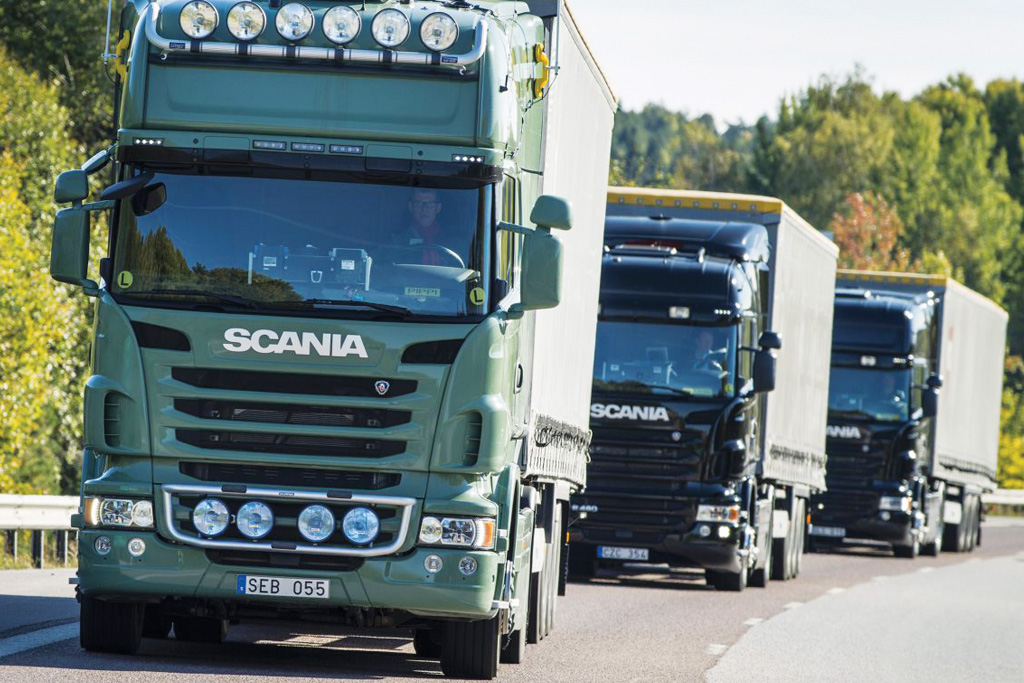Questions around the UK’s truck platoon trial

In 2018, the United Kingdom (UK) is set to run a £8,1-million (R152-million) truck platooning test. While similar tests have run successfully in other parts of the world, the UK Institute of Road Transport Engineers (IRTE) has some concerns.
A two-year platooning trial is set to begin in the UK in 2018, led by the UK Transport Research Laboratory (TRL). DAF, a market leader in the UK, is among the original equipment manufacturers that will participate in the test with a three-truck platoon.
While DAF is excited about the trial, not everyone shares these sentiments. According to Transport Engineer, the official journal for the UK IRTE, the Institute has reservations about the trial noting the vastly different road conditions in the UK compared to the United States and Europe where similar trails have successfully taken place.
Transport Engineer quotes John Eastman, chair of UK IRTE professional sector council: “The risks are extreme and the complications manifold. Drivers have a big enough job trying to pull out with a single vehicle, so if you have three vehicles trying to pull out into traffic, it could be very dangerous.
“There would also be concerns for other road users trying to exit the motorway being blocked off by the platoon as well as restricted vision from adverse weather conditions.”
However, Ron Borsboom, a board member of DAF Trucks, believes that platooning will actually help truck drivers. He points out: “Truck platooning is predominantly an efficiency solution for long-haul operations on main roads and motorways, but even then drivers will be specially trained to take control if necessary and deploy other work-related activities.
“It relieves the workload of the person behind the wheel. Traffic is getting busier and busier, and more demanding for the driver. Intelligent systems, such as truck platooning, are going to help the driver to cope with those demands.”

The UK is considering truck platooning as the trucks in a platoon drive in close formation, which results in lower fuel consumption and thus less CO2 emissions. Platooning is also said to improve traffic flow. The wirelessly connected trucks in a platoon use information from the first truck (which is driven manually) to accelerate, brake and steer.
Eastman also argues that alternative transport measures – such as articulated trailers or road trains – were not given enough consideration. He believes using articulated trailers would be a more viable option.
John Parry, chair of UK IRTE steering group, echoes Eastman’s concerns. “The number of intersections that we have on our motorways will make it very difficult to manage, especially if cars don’t realise there’s a platoon and try to go between the vehicles. The safety aspect must be paramount and I think it overrides the possible benefits. The trials need to answer these important concerns,” Parry says.
A report on the feasibility of platooning in the UK by the TRL, Ricardo and Transport and Travel Research, which was published in 2014, addressed many of these concerns.
The report, according to UK magazine Commercial Motor, refers to a study by Safe Road Trains for the Environment that included two trucks and three cars with a six-metre gap between each vehicle.
Commercial Motor notes from the report: “While a six-metre gap would discourage car drivers from intruding, any platoon must be able to deal with such eventualities.”
The report also echoes Borsboom’s sentiments about the drivers. Commercial Motor quotes the report: “Platooning means the formation of groups of heavy commercial vehicles following a lead vehicle using technologies so that the following vehicles are controlling themselves, as close as just six metres part. A driver in the platoon is not required to actively control the vehicle. The lead vehicle is manually controlled by a driver.”
Platooning will mean that any drivers in the vehicles following the first one will not have to monitor, or have any input in, the driving situation all the time. Their workload will thus be greatly reduced.
According to the report, the driver should be able to take control of the vehicle within seconds in emergency situations, or when mechanical failure takes place. If, for example, a vehicle in the platoon does not stay in the required distance, the driver should be able to accelerate or brake accordingly. A vehicle should also be able to be driven manually and join a platoon at a particular point.
For the platooning test to take place, very specific conditions need to be in place, the report states. For example, the test will have to include the same vehicle types, be limited to five vehicles in a platoon, exclude vehicles and tankers carrying hazardous loads and avoid toll gates and road works.
The report also points out that for a fleet of five 44-t trucks pulling curtain-side trailers, that cover around
100 000 km per year, to achieve financial payback within two years, around 60 percent of journey time would need to be conducted within a vehicle platoon.
Borsboom concludes: “The trials will enrich our understanding and knowledge of the benefits that platooning can deliver. The UK government is to be commended for undertaking such a significant and valuable initiative.”
Published by
Focus on Transport
focusmagsa




